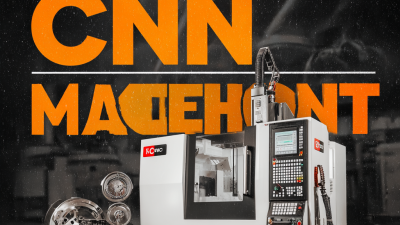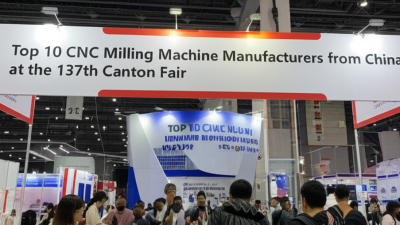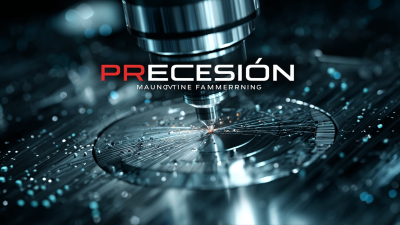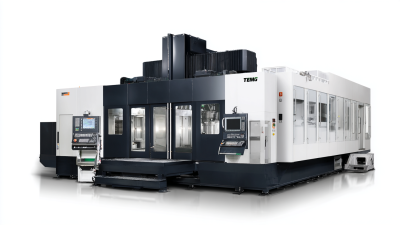How to Optimize Your CNC Equipment for Maximum Efficiency
In the competitive landscape of modern manufacturing, optimizing CNC equipment is essential for maximizing operational efficiency and reducing costs. According to a report by the International Federation of Robotics, the CNC machining industry saw a 12% increase in productivity over the past five years, highlighting the necessity for continual improvement in equipment performance. Additionally, a study by CIMdata indicates that organizations leveraging advanced CNC technology can achieve up to 25% reductions in production time while enhancing output quality. By focusing on effective strategies for CNC equipment optimization, manufacturers can not only improve their workflow but also sustain a competitive advantage in the market. This guide will explore key methods for tuning and enhancing CNC equipment to unlock its full potential, ensuring that manufacturers can meet rising demands while maintaining high standards of precision and efficiency.

Understanding the Basics of CNC Equipment Optimization
 Optimizing CNC equipment is essential for enhancing operational efficiency and reducing production costs. According to a 2022 report by the International Society of Automation, improper calibration and maintenance can lead to inefficiencies in CNC machines, potentially increasing operational costs by up to 25%. Therefore, understanding the fundamentals of CNC equipment optimization is crucial for manufacturers who aim to remain competitive in today's fast-paced market.
Optimizing CNC equipment is essential for enhancing operational efficiency and reducing production costs. According to a 2022 report by the International Society of Automation, improper calibration and maintenance can lead to inefficiencies in CNC machines, potentially increasing operational costs by up to 25%. Therefore, understanding the fundamentals of CNC equipment optimization is crucial for manufacturers who aim to remain competitive in today's fast-paced market.
One key aspect of optimization is regular maintenance, which involves systematic checks and adjustments to the machinery. Research by the Manufacturing Institute highlighted that organizations that implemented preventive maintenance programs experienced a 30% reduction in downtime. Additionally, effective programming practices, such as utilizing advanced tool paths and optimizing feed rates, can improve machining cycles significantly. A study from the National Institute of Standards and Technology found that optimized CNC machining processes could enhance productivity by as much as 40%, demonstrating the tangible benefits of a focused optimization strategy. By prioritizing these foundational elements, companies can achieve notable gains in efficiency and output.
Key Performance Indicators for Measuring CNC Efficiency
To optimize CNC equipment for maximum efficiency, it’s essential to focus on Key Performance Indicators (KPIs) that gauge the operational effectiveness of CNC machines. According to a report by the American Machinist, monitoring KPIs like cycle time, throughput, and equipment downtime can help manufacturers achieve up to 30% improvement in production efficiency. Cycle time, which refers to the total time from the beginning to the end of a manufacturing process, should be minimized to enhance productivity. For instance, reducing idle time during machining can significantly decrease overall cycle times.
Another critical KPI is OEE (Overall Equipment Effectiveness), which factors in availability, performance, and quality. A benchmark study by the U.S. Department of Energy indicates that a well-implemented OEE strategy can lead to efficiency gains of 10% to 50%. By keeping track of these metrics, companies can identify bottlenecks, optimize machine settings, and improve maintenance schedules. Moreover, implementing real-time monitoring systems can enhance data collection on these KPIs, allowing for quicker adjustments and sustained operational success. Reducing variations and optimizing for machine utilization will ultimately lead to a more streamlined production process.
Optimization of CNC Equipment Efficiency
Essential Maintenance Practices for Enhanced CNC Performance
Essential maintenance practices are crucial for enhancing CNC performance and ensuring maximum efficiency of your CNC equipment. According to a report by the Association for Manufacturing Technology (AMT), regular maintenance can reduce machine downtime by up to 30%, leading to significant productivity gains. Implementing a structured maintenance schedule that includes routine checks and preventive measures can extend the lifespan of your equipment and improve overall operation.
One key aspect of maintenance is the calibration and adjustment of CNC machines. Research from the National Institute of Standards and Technology (NIST) indicates that a well-calibrated machine can improve component accuracy by up to 50%, reducing material waste and rework times. Additionally, keeping a close eye on lubrication and cooling systems is vital. The American Society of Mechanical Engineers (ASME) suggests that efficient lubrication can enhance machine performance by minimizing friction-related wear, which can, in turn, save an organization up to 15% in operational costs. By adhering to these essential practices, manufacturers can not only enhance their CNC performance but also streamline their production processes.
Advanced Techniques and Technologies for CNC Optimization
To maximize the efficiency of CNC equipment, exploring advanced techniques and technologies is essential. One significant approach involves the integration of real-time monitoring systems. These systems utilize sensors and IoT technology to collect data on machine performance, enabling operators to identify inefficiencies or potential breakdowns. By analyzing this data, companies can make informed adjustments to their processes, enhancing operation speed and minimizing downtime.
Another innovative strategy is the implementation of adaptive machining software. This technology allows machines to automatically adjust their parameters based on the material being processed and the current workload. By optimizing feed rates and tool paths in real-time, adaptive machining not only improves precision but also reduces wear on tools, leading to longer life cycles and lower operational costs. Embracing such advanced technologies facilitates a more proactive approach to CNC management and ultimately fosters greater productivity in manufacturing environments.
Training Personnel for Optimal CNC Operation and Efficiency
 Training personnel effectively is crucial for maximizing the efficiency of CNC equipment. Skilled operators who understand the intricacies of CNC machines can ensure smoother operations, reduce downtime, and increase production output. Investing in comprehensive training programs not only empowers employees but also aligns their skills with the latest technology trends and operational best practices.
Training personnel effectively is crucial for maximizing the efficiency of CNC equipment. Skilled operators who understand the intricacies of CNC machines can ensure smoother operations, reduce downtime, and increase production output. Investing in comprehensive training programs not only empowers employees but also aligns their skills with the latest technology trends and operational best practices.
Tips: Encourage a hands-on training approach. Practical, simulation-based learning allows operators to grasp the nuances of machine operation better. Creating a safe environment for them to practice will build their confidence and familiarity with the equipment.
Moreover, ongoing education plays a significant role. As CNC technology evolves, regular workshops and refresher courses can keep your team updated on the latest techniques and machine capabilities.
Tips: Implement a mentorship program. Pairing less experienced operators with seasoned professionals fosters knowledge transfer and reinforces a culture of continuous learning within your organization. This not only enhances individual skill sets but also cultivates a cohesive team that can tackle challenges collaboratively.
Related Posts
-

The Ultimate Guide to Discovering Top Quality Suppliers for Best CNC Equipment
-

Top 10 CNC Milling Machine Manufacturers from China at the 137th Canton Fair
-

How to Choose the Best Precision Manufacturing Partner for Your Global Supply Chain
-

The Ultimate Guide to Sourcing the Best CNC Machine Tools for Your Business Needs
-

Ultimate Guide to Comparing the Leading CNC Milling Machines for Global Buyers
-

Common Issues Facing the CNC Equipment Industry and Their Impact on Production Efficiency

